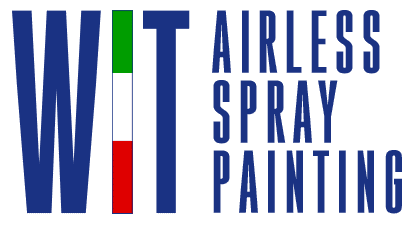The electrostatic liquid coating process, an advanced coating that utilises electrostatic technology for the distribution of liquid paints or coatings, is a...

The electrostatic liquid coating process, an advanced coating that uses electrostatic technology to dispense liquid paints or coatings, is characterised by multiple advantages over traditional coating approaches. With extensive use in the automotive, metalworking, electronics and other manufacturing areas, electrostatic liquid coating is an effective and efficient solution for industrial coating needs.
The procedure for electrostatic liquid coating consists of the following steps:
- Surface preparation: Essential in this phase is thorough cleaning to remove oil, dust and any other contaminants to ensure perfect adhesion of the coating.
- Paint preparation: The paint liquid for the electrostatic process is diluted appropriately with water or solvents, depending on the nature of the paint and the specific requirements of the process.
- Paint application: The electrostatic gun plays a crucial role, better known as an applicator, electrostatically charges the liquid paint, which is then sprayed onto the surface.
- Electrostatic charging: The distinguishing element of electrostatic painting is the application of an electric charge – positive or negative – to the paint by the spray gun, while the surface of the object is grounded or charged with an opposite polarity.
- Electrostatic attraction: Thanks to electrostatic charges, the sprayed paint is attracted to the surface of the object, causing the coating to spread evenly over the surface.
- Curing and drying: The last step involves the coating, once applied, undergoing a curing and drying process so that it becomes solid and adheres completely to the surface.
Discover the advantages of the liquid electrostatic painting process:
- Unparalleled efficiency: Thanks to the use of electrostatic technology, this painting method allows better material utilisation, minimising waste and ensuring cost savings.
- Optimum coverage: The use of electrostatic charge allows for an even distribution of the paint, being effective even on complex or uneven surfaces.
- Less overspray: Due to the strong electrostatic attraction, the electrostatic liquid painting process minimises the amount of paint dispersed into the surrounding environment, which is crucial in reducing overspray.
- Environmental responsibility: As opposed to traditional spray painting, the electrostatic approach significantly reduces the emission of potentially harmful substances, such as volatile organic compounds (VOCs), making the process more environmentally friendly.
- Uniformity of coating: Electrostatic liquid coating guarantees a perfectly uniform finish, minimising the need for subsequent touch-ups.
- Superior adhesion: The secret of the coating’s longevity? The affinity between paint and surface is promoted by the electrostatic charge, which promotes superior adhesion and a durable coating.
Electrostatic liquid coating is an advanced and effective technology that is widely used in coatings in many industries. This practice represents a leading method that brings significant advantages on multiple fronts, namely operational efficiency, superior quality of the finished product and uniformity of the result, compared to traditional painting techniques.
It is important to emphasise that there is a crucial distinction between electrostatic liquid coating and electrostatic powder coating. In the case of the latter, the coating consists of fine powders instead of liquids. Both processes find wide application in the industrial sector for wide-ranging painting jobs; however, the selection between the two methods will be determined by specific requirements and the application at hand.
Stay informed by consulting our digital magazine.
